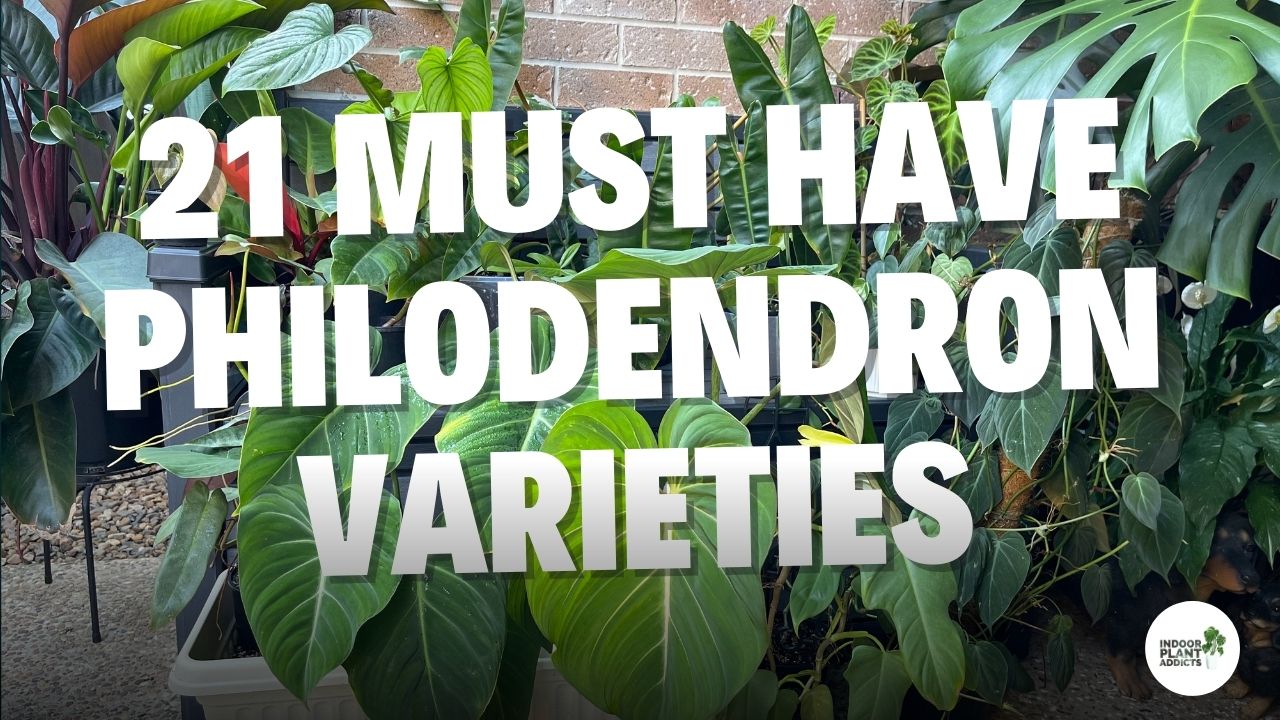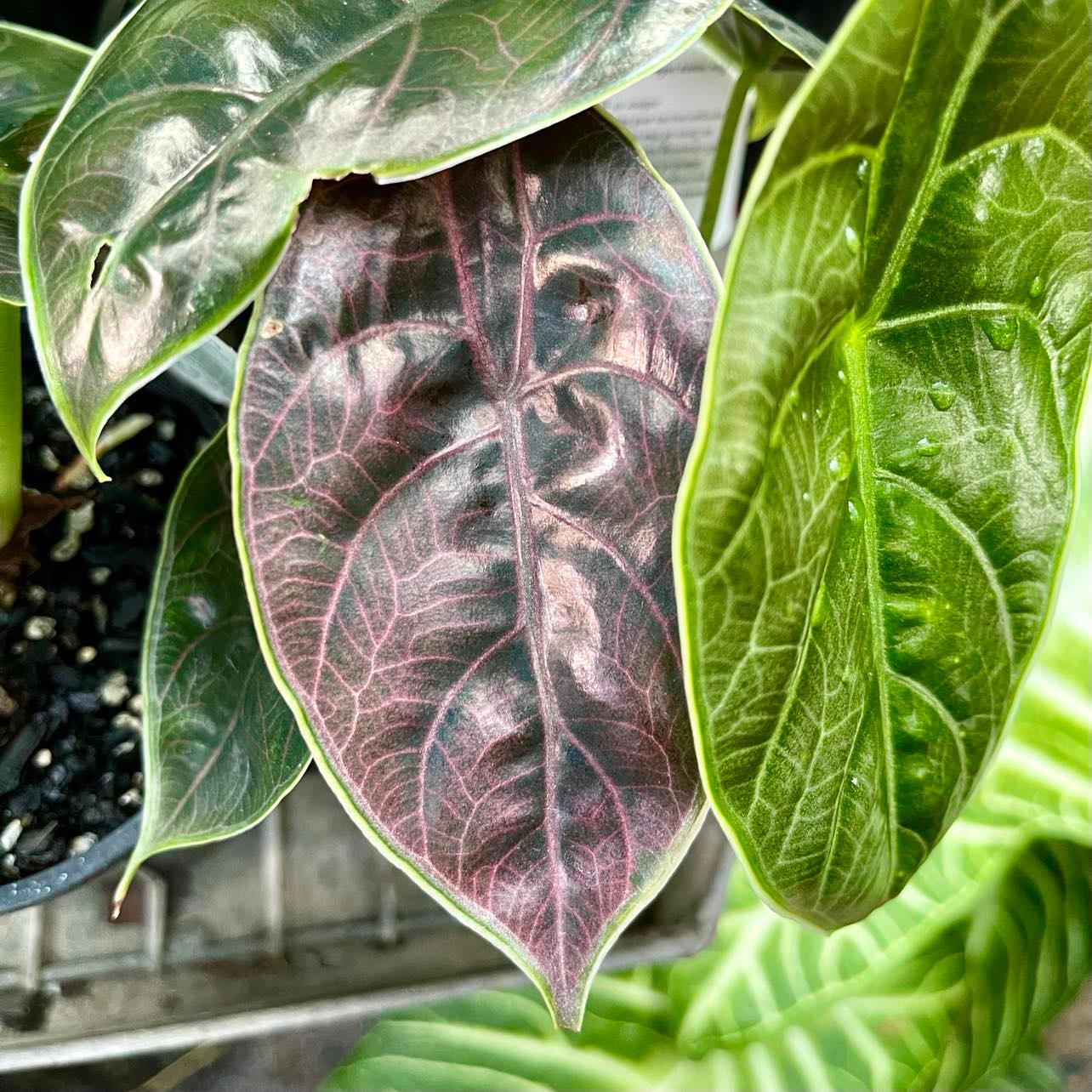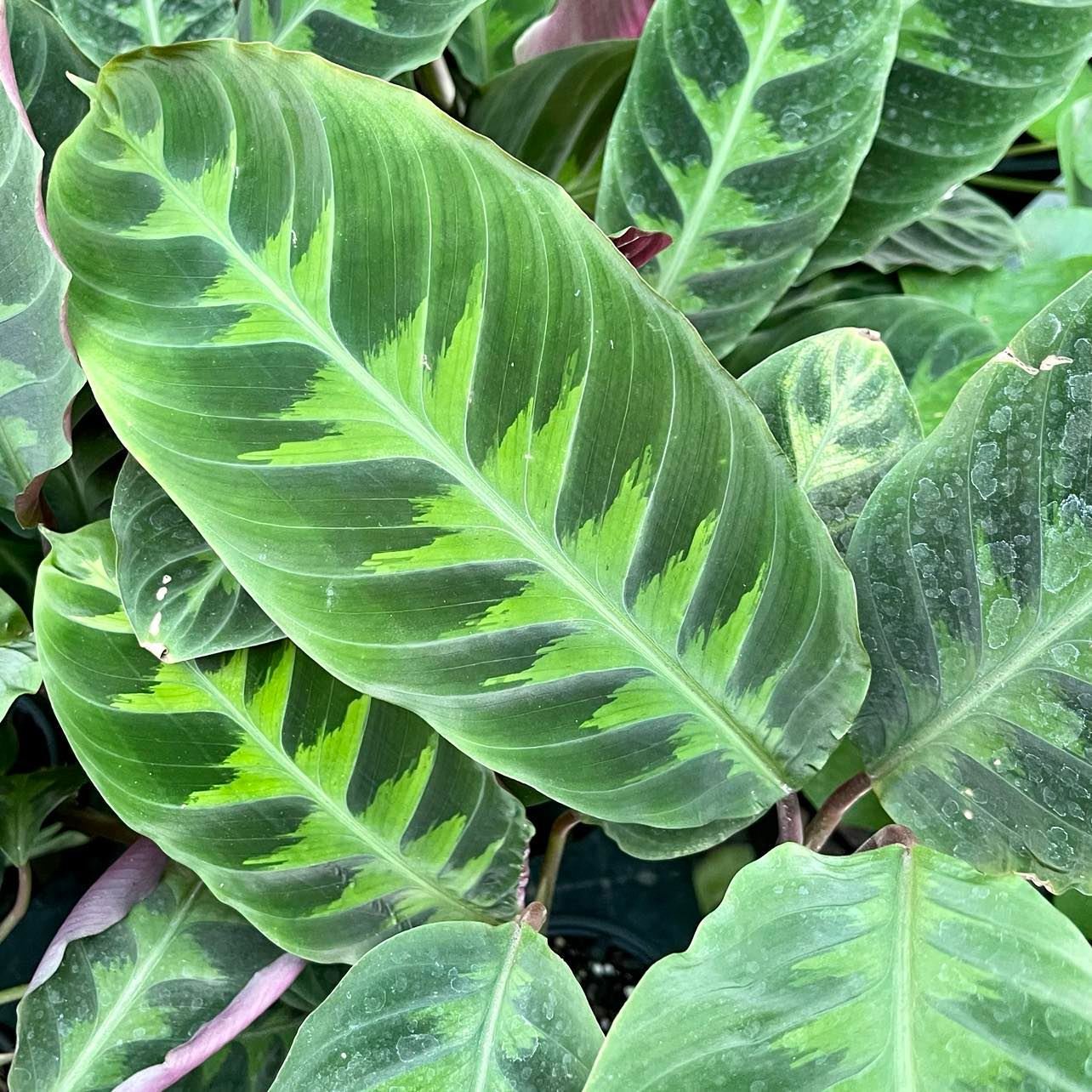Propagating plants is one of my personal favorite things to do. You can turn one of your favorite plants into two (or more), for yourself or as a gift for someone else to share the indoor plant love. Propagating can be easy and there’s a few different ways you can do it. Keep reading for the different ways you can propagate your favorite indoor plants.
Method 1: Stem Cuttings
Taking a stem cutting is one of the most popular methods of propagating as it’s easy and effective and can be done in two ways, using water or soil.
Propagating indoor plants via stem cuttings is a rewarding and cost-effective way to multiply your favorite plants, or share them with others. Below, we explore the different ways you can propagate with stem cuttings.
Soil Propagation
Soil propagation using stem cuttings is great for indoor plants such as the ‘Rubber Plant‘ pictured below.
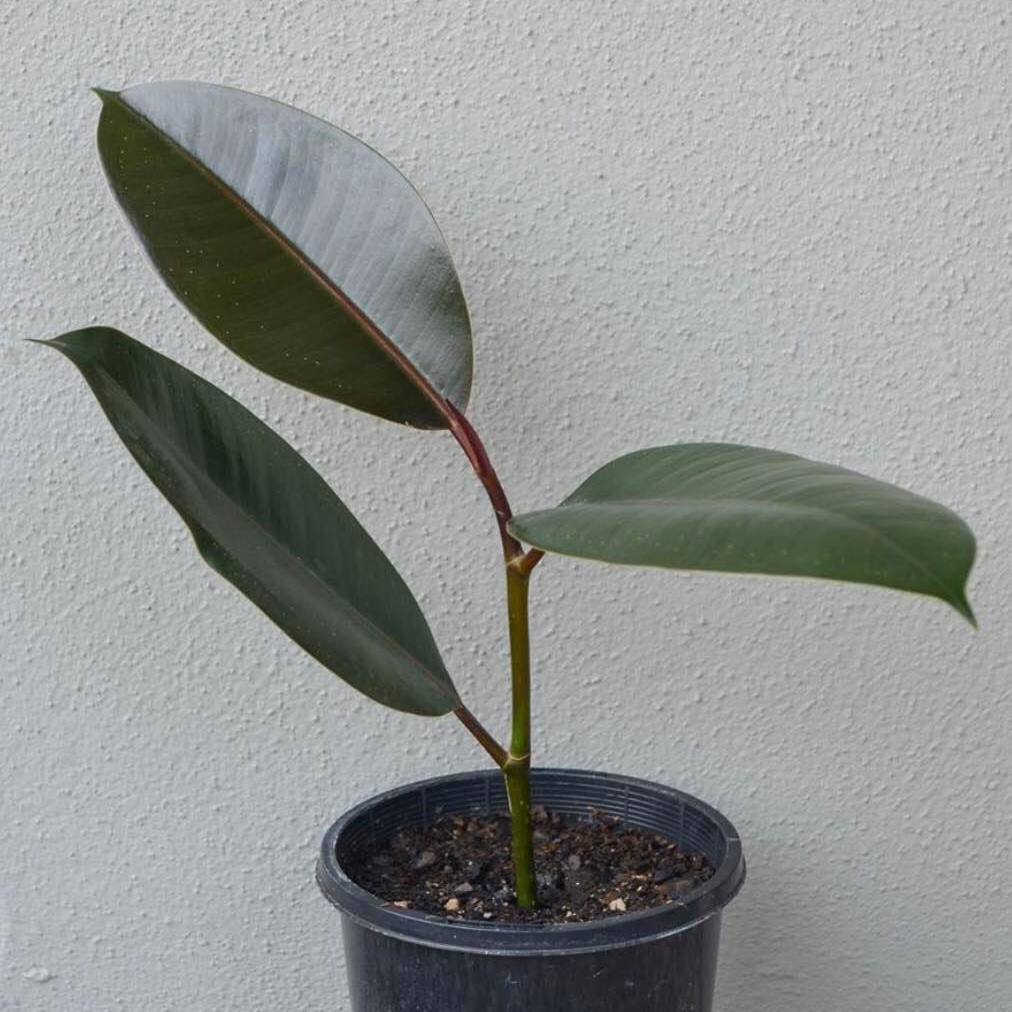
Preparation
- Select a healthy parent plant and identify a vigorous stem. (Make sure to avoid damaged or diseased stems as this will lower your chances of success)
- Cut a 3-5 inch long segment from the stem, ensuring to make the cut just below a node (the point where a leaf attaches to the stem).
- Carefully remove the lower leaves, retaining about two to three leaves at the top of the cutting.
Rooting Hormone Application
- Dip about an inch of the lower part of the cutting into a good rooting hormone. Although this step is not necessary it can help encourage quicker root development.
Planting
- Prepare a pot with well-draining soil.
- Use a pencil to create a hole in the soil to accommodate the cutting, this helps to avoid removing the rooting hormone when placing the cutting.
- Insert the treated end of the cutting into the hole, and gently firm the soil around it.
Maintenance
- Position the pot in a location with bright indirect light.
- Keep the soil moist but not waterlogged.
- Propagate during the plant’s active growing season for a higher success rate.
Note: To check if your cutting has started rooting, gently tug the stem and if you feel resistance then your cutting has rooted! Although make sure you are careful as to not damage developing roots.
Method 2: Water Propagation
Water propagation from stem cuttings is our preferred method for climbing plants such as the devils ivy imaged below.

Preparation
- Similar to soil propagation, cut a 3-5 inch long segment from the stem, making sure to cut just below a node, and remove the lower leaves.
Rooting in Water
- Fill a jar with fresh water and place the cutting into the water, ensuring the cut end is submerged.
- Position the jar in a spot with bright indirect light.
- Replace the water as needed to keep it fresh.
Transplanting
- Once roots emerge and grow to over an inch long, which may take 4-6 weeks, it’s time to transplant the cutting into soil.
- Prepare a pot with well-draining soil and make a hole for the cutting.
- Gently place the rooted cutting into the hole and firm the soil around it.
- Treat the newly potted plant as you would any other, ensuring it receives the right amount of light and water.
Method 3: Leaf Cuttings
Leaf cuttings are yet another fascinating method of propagating certain types of indoor plants. This technique is particularly useful for plants like succulents, Snake Plants or the Watermelon Peperomia pictured below. Here’s how to go about it along with some additional insights and potential downsides of this technique.

Leaf Cuttings Propagation Method
Preparation
- Choose a healthy, mature leaf from the parent plant.
- Using a clean, sharp scissors or a knife, cut the leaf into segments about 2-4 inches long.
- Allow the cuttings to callous over for a day or two to prevent rot, especially important for succulents.
Rooting Hormone Application (optional):
- Although not necessary, dipping the cut end of the leaf segment into rooting hormone can encourage faster root and shoot development.
Planting
- Fill a pot with a well-draining soil mix, like a succulent or cactus mix for succulents, or regular potting mix for other plants.
- Insert the leaf cuttings into the soil, burying about 1/3 to 1/2 of each cutting.
- Position the pot in a location with bright, indirect light.
Maintenance & Transplanting
- Keep the soil lightly moist but not waterlogged.
- It might take several weeks before you see new growth emerging from the soil or the base of the cuttings.
- Once the new plants have developed a sturdy root system, they can be transplanted into individual pots.
Advantages of Leaf Propagation
- Cost-Effectiveness: Leaf cuttings are a highly cost-effective way to create new plants from existing ones.
- Simplicity: It’s a straightforward method that even novice gardeners can undertake successfully.
Disadvantages of Leaf Propagation
Species Limitation: Not all plants can be propagated through leaf cuttings. This method is primarily suitable for certain succulents and some houseplants like the Snake Plant.
Slower Growth: Plants propagated via leaf cuttings may take longer to reach a substantial size compared to those propagated by stem cuttings or division.
Less Predictable: The success rate and the growth pattern of new plants from leaf cuttings can be less predictable. For instance, variegated plants may revert to a solid color.
Employing leaf cuttings for propagation is a journey that requires a blend of patience, the right plant selection, and adherence to care guidelines. Despite its limitations, it’s a worthwhile venture for those looking to expand their indoor garden in a simple and cost-effective manner.
Method 4: Air Layering
Air layering is a more advanced propagation technique used primarily for woody indoor plants or those that have become leggy and are hard to propagate through stem cuttings. It’s also another great way to propagate trailing plants such as Monstera Adansonii.
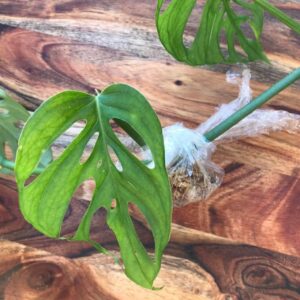
It’s a unique way to encourage a stem to develop roots while still attached to the parent plant. Here’s a step-by-step guide on how to propagate indoor plants by air layering.
Air Layering Propagation Method
Selection of Plant and Branch
- Choose a healthy, mature branch or vine on the plant (typically about one year old).
- The branch should be straight, and well-attached to the parent plant.
Applying Sphagnum Moss
- Soak sphagnum moss in water and wring it out so it’s moist but not dripping.
- Encase the wounded section of the branch with moist sphagnum moss.
Wrapping
- Wrap the moss with plastic wrap or aluminum foil to hold it in place and to maintain humidity.
- Secure the wrap with tape, but ensure it’s not too tight.
Maintenance
- Keep an eye on the moisture level in the moss, and if it begins to dry out, add a little water.
- This process can take several weeks to a few months for roots to develop.
Severing and Planting
- Once a good network of roots has developed within the moss, cut the branch off below the root ball.
- Carefully remove the wrapping, and plant the new rooted cutting in a pot with well-draining soil.
- Water it well and place it in a location with bright, indirect light.
Advantages of Air layering
Maintains Plant Size: Useful for propagating large plants without reducing the size of the original plant.
Higher Success Rate: Tends to have a higher success rate compared to other methods like leaf or stem cuttings for certain species. This is due to the mother plant being able to provide additional nutrients to the developing cutting.
Air layering is a fantastic method for propagating plants that are hard to root from cuttings or for rejuvenating overgrown houseplants. Despite being time-consuming and a bit complex, it’s a rewarding way to create new plants from old ones, ensuring the continuance of particularly cherished or hard-to-find varieties.
Method 5: Division
Division is another method of propagating and can be quite easy. It’s just separating the smaller plants from the mother plant. Firstly, remove the plant from the pot and find the section you would like to take out. Gently remove the smaller plant from the mother plant, getting as many roots as you can.

If the plant isn’t coming out easily, you may need to use a knife to help separate it. Check the plant and remove any browning leaves or loose roots. Pot the plant into a suitable sized pot in well draining soil, water thoroughly and place into bright indirect light.
